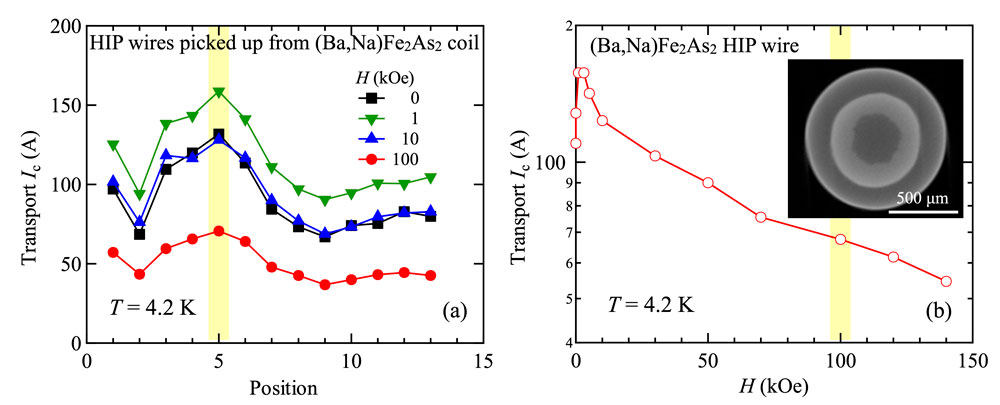WB5-5
X-ray Characterizations of Iron-based Superconductor Round Wires with Large Critical Current Density
Nov. 30 16:30-16:45
*Tsuyoshi Tamegai1, Sunseng Pyon1, Satoshi Awaji2, Hideki Kajitani3
Department of Applied Physics, The University of Tokyo1
High Field Laboratory for Superconducting Materials, Institute for Materials Research, Tohoku University2
Naka Fusion Institute, National Institutes for Quantum and Radiological Science and Technology3
Demands for new generation superconducting wires are growing rapidly. One of good candidates to meet such demands is wires of cuprate superconductors. However, they face several issues such as strong magnetic field of critical current density (Jc) and delamination. In addition, due to complicated fabrication process, fabrication cost of wire continues to be high. In such a situation, wires and tapes of iron-based superconductors (IBSs) attract much attention, since they have sufficiently high Tc and Hc2. In addition, IBSs have sufficiently high Jc in single crystals, and it can be enhanced by the introduction of artificial defects [1]. Much effort is devoted to the development of tapes and wires of IBSs, in particular to those based on 122-type IBSs. Actually, Jc over the critical level of 1x105 A/cm2 under the field of 100 kOe has been achieved in 2014 in tapes [2], and Jc in wires also exceeded a half of that level in 2021 [3].
We have started the preparation of long-length (Ba,Na)Fe2As2 wire over 10 m, and constructed small coils to generate magnetic field [3]. Critical current (Ic) of the long wire is much smaller than that in short segments picked up from the long wire, and varies considerably along the length as shown in Fig. 1(a). It is important to know the reason for the suppression of Ic and parameters that affect it most. We have employed X-ray characterizations for such purpose. Magnetic field dependence of Ic for the best segment is shown in Fig. 1(b). The largest value of Jc calculated from the smallest cross section of this segment evaluated using X-ray tomography turn out to be record high, 6.7x104 A/cm2 at 100 kOe. In addition, X-ray diffraction measurements on the longitudinal and transverse cross sections of the wire has proven that the core of the wire is concentrically textured. It demonstrates the importance of texturing in enhancing Jc.
Fig. 1 (a) Transport Ic at several magnetic fields for short segments picked up from different positions of the long wire used for a small coil. (b) Magnetic field dependence of transport Ic for the short segment with the largest Ic. The inset shows a representative X-ray tomography image of the transverse cross section
[1] T. Tamegai et al., Supercond. Sci. Technol. 25, 084008 (2012).
[2] X. P. Zhang et al., Appl. Phys. Lett. 104, 202601 (2014).
[3] S. Pyon et al., Supercond. Sci. Technol. 34, 105008 (2021).
Keywords: iron-based superconductor, superconducting wire, critical current density, X-ray tomography
